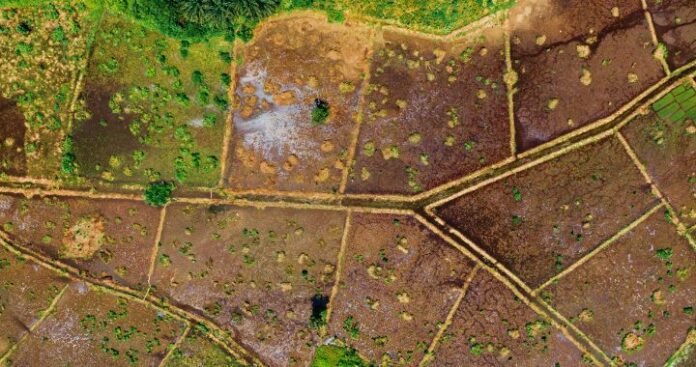In an era where environmental preservation is a top priority, addressing land contamination effectively has become an essential part of maintaining public health and protecting ecosystems. At the forefront of this critical task is Adeptus, a company that specializes in providing innovative land contamination assessment services. With a commitment to advancing technology and employing modern methodologies, Adeptus is redefining how land contamination is identified, analyzed, and managed. This article explores the innovative approaches used by Adeptus to assess land contamination and deliver sustainable solutions.
Understanding Land Contamination Assessment
Land contamination occurs when hazardous substances, such as chemicals, heavy metals, and pollutants, degrade soil, water, or air quality. This contamination can result from industrial activities, waste disposal, agricultural practices, or accidental spills. Contamination poses risks to human health, wildlife, and the environment, making it crucial to assess the extent and nature of pollutants before any remediation efforts can begin.
A comprehensive land contamination assessment typically involves sampling soil, groundwater, and surface water to identify pollutants, followed by risk evaluation to understand the potential impacts on health and the environment. Adeptus has developed advanced, cutting-edge methods for improving the accuracy, efficiency, and sustainability of contamination assessments.
1. Advanced Data Collection Techniques
One of the key innovations at Adeptus is the use of remote sensing technologies to enhance the accuracy and efficiency of land contamination assessments. Remote sensing involves the use of aerial surveys, satellite imagery, and drones equipped with specialized sensors to monitor and map the contamination on large and hard-to-reach sites.
- Aerial and Satellite Imaging: These tools provide high-resolution images that help identify potential contamination hot spots. Satellite imaging also offers the ability to track historical changes to the land over time, allowing for better prediction of future risks.
- Drone Technology: Drones equipped with sensors can fly over and collect data from areas that are difficult to access. This enables the collection of real-time data and reduces the risk of contamination exposure to field workers.
These technologies provide valuable insights into land contamination, allowing Adeptus to create accurate maps and models of contaminated sites. They also allow for rapid and cost-effective assessments, especially for large-scale projects.
2. Geophysical Surveying Techniques
Another innovative approach that sets Adeptus apart is the use of geophysical surveying methods. Geophysical surveys involve the use of non-invasive techniques to detect and analyze underground contamination without the need for drilling or excavation. These methods allow for the efficient mapping of contamination at various depths, reducing the environmental impact of the assessment process.
- Ground Penetrating Radar (GPR): GPR is used to detect contaminants in the soil and groundwater. By sending electromagnetic pulses into the ground and analyzing the return signals, Adeptus can identify subsurface anomalies and contamination patterns. This method is particularly useful for detecting petroleum products, heavy metals, and chemicals that affect groundwater quality.
- Electrical Resistivity Tomography (ERT): ERT is used to map the resistivity of soil and rock materials, helping to identify areas of contamination. This technique is especially useful for understanding the distribution of contaminants and their potential movement in groundwater systems.
These geophysical methods help reduce the need for extensive digging and soil disturbance, making the assessment process more efficient, environmentally friendly, and cost-effective.
3. Real-Time Monitoring and Data Analytics
Adeptus also utilizes real-time monitoring systems to gather continuous data on environmental conditions. By installing sensors at key points on a site, the company can track variations in soil, air, and water quality throughout the assessment period.
- Continuous Soil and Groundwater Monitoring: With real-time monitoring systems, Adeptus can detect fluctuations in the levels of contaminants, providing immediate insights into the potential spread of pollution. These systems can also trigger automatic alarms when contamination exceeds predetermined safety thresholds.
- Data Analytics and Predictive Modeling: Using advanced data analytics tools, Adeptus integrates data from various sources, such as remote sensing, geophysical surveys, and real-time monitoring systems, to create predictive models. These models help forecast the movement of contaminants over time and their potential impact on surrounding ecosystems and human health. By analyzing this data, Adeptus can offer proactive solutions that reduce risks and inform remediation strategies.
4. Sustainable and Green Remediation Techniques
While land contamination assessment is the first step, Adeptus also incorporates innovative green remediation techniques to reduce the environmental footprint of the cleanup process. These approaches prioritize sustainability and minimal disruption to the land.
- Bioremediation: Adeptus uses biological processes to remove contaminants from soil and water. This includes the use of microbes or plants to degrade hazardous substances into harmless compounds, which not only restores the land but also promotes ecological balance.
- Phytoremediation: This process uses plants to absorb and break down pollutants, particularly in areas with heavy metal contamination. Phytoremediation is an eco-friendly, cost-effective approach that enhances soil health while cleaning up contaminants.
- In-situ Remediation: This method treats contaminants on-site without removing contaminated soil or water, which minimizes waste generation. Techniques like chemical oxidation, soil vapor extraction, and groundwater treatment are part of Adeptus’ green remediation toolkit.
5. Collaborative Risk Assessment with Stakeholders
Adeptus also emphasizes collaboration with clients, regulators, and environmental stakeholders throughout the land contamination assessment process. By involving all relevant parties in the risk assessment and decision-making process, Adeptus ensures that the assessment is comprehensive, transparent, and aligned with local environmental regulations and policies.
Conclusion
Adeptus has pioneered several innovative approaches to land contamination assessment, leveraging advanced technology, geophysical methods, real-time monitoring, and sustainable remediation techniques. These innovations not only improve the efficiency and accuracy of contamination assessments but also contribute to reducing the environmental impact of land remediation projects. By adopting these cutting-edge practices, Adeptus is helping industries, governments, and communities restore contaminated land safely and effectively, ensuring a cleaner, healthier future for all.



